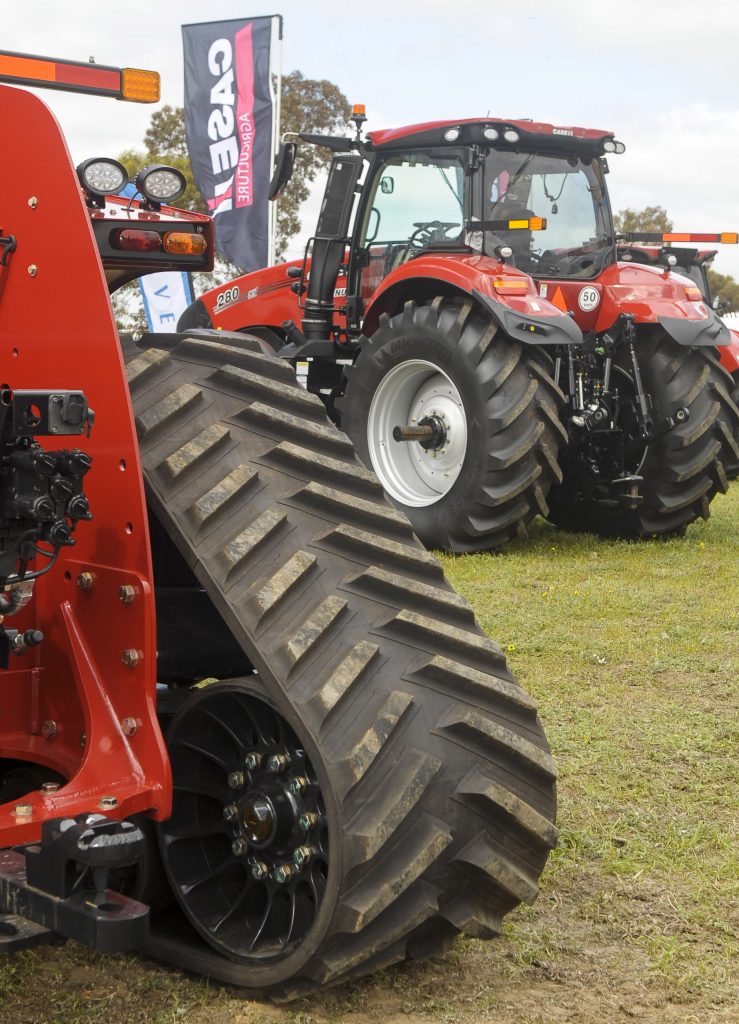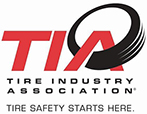It’s no secret we love big tyres but the trend for larger, more powerful farm machinery has driven many to examine whether tracks or tyres provide the best solution for primary agricultural equipment.
We asked our agricultural expert what factors needed to be considered when deciding between the two.
Firstly, why and where are there more larger machines?
Over the past 20 years, demands for ever increasing production efficiency, and the availability in some regions of arable land, has created larger farm acreages. Bigger farms require more powerful machines to drag correspondingly larger implements. From preparing the soil, to seeding, spraying, and harvesting – larger tools have proliferated!
Primary tractors used on broad acre cereal cropping operations are usually in excess of 550 horsepower. Tyres will always be used for tractors and implements and harvesters but there are benefits too for tracks, in certain circumstances.
How do tracks and tyres compare?
|
Comparison |
Tracks |
Tyres |
|
Upfront |
$ |
$ |
|
Maintenance Cost |
$ |
$ |
|
Ride |
Smoother |
Rougher |
|
Implement Hook-up |
Easier |
More Difficult |
|
Turning Under Load |
More Difficult |
Easier |
|
Wet Conditions Compaction |
Low |
High |
|
Dry Conditions Compaction |
Low |
Low |
|
Manoeuvrability |
Easier |
More Difficult |
|
Fuel Efficiency – Concrete |
Higher Fuel Usage |
Lower Fuel Usage |
|
Fuel Efficiency – Dry Soil |
Higher Fuel Usage |
Lower Fuel Usage |
|
Fuel Efficiency – Wet Soil |
Lower Fuel Usage |
Higher Fuel Usage |
Tracked type combined harvesters
These are sometimes favoured in regions of broad acre grain production due to consistency of power transfer and fluidity of motion – track machines have significantly reduced power hop, limit soil degradation and offer enhanced operator comfort.
The latter has great influence on purchasing decisions given the amount of time and distance travelled during harvest. Dusk until dawn, horizon to horizon and back again.
Power hop is a ‘porpoising’ type of fore/aft pitch and bounce instability that occurs on four-wheel drive and mechanical front wheel drive rubber tyre tractors operating under draft loads. Soil moisture and texture are major influences of power hop. The drier the soil, the more likely it is that power hop will occur. Cereal crops in Western Australia, for example, ripen during December to January when mean temperatures peak and moisture is minimal. This makes tracks more attractive.
So, no more tyres in agriculture?
We think it is highly unlikely tracks will supersede tyres entirely. What do you think?
While tracks are not pressure vessels and do not go flat, the trade-off is that they are considerably more complicated to maintain, plus of course the benefits vary depending on the acreage, terrain and climatic conditions of the land you are farming.
Please get in touch to speak about any issues that effect your business. You can also check out our choice of agricultural tyre repair systems here.


